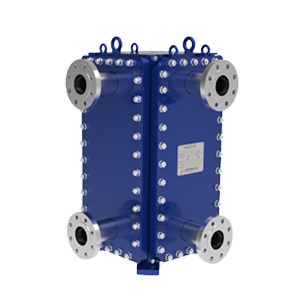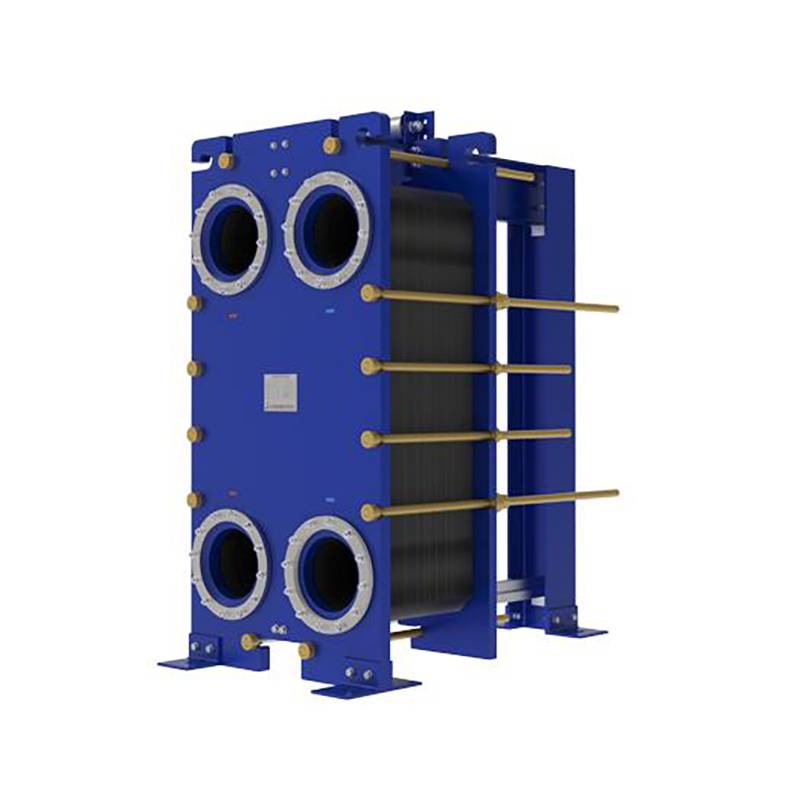Understanding api 662 for plate heat exchangers
API 662 defines standards for plate heat exchanger...
More
The principle of pillow plate heat exchangers revolves around their unique design, featuring dimpled or "pillowed" plates that create turbulent flow paths for fluids. This innovative structure enhances heat transfer efficiency by maximizing surface area and disrupting laminar flow, ensuring optimal thermal exchange between media. Unlike traditional flat-plate exchangers, the pillow plate's embossed pattern provides mechanical strength while maintaining flexibility, making it ideal for high-pressure and high-temperature applications.
Pillow plate heat exchangers leverage their distinctive dimpled design to achieve superior heat transfer performance. The raised patterns on the plates generate turbulence, which breaks up boundary layers and significantly improves thermal conductivity. Studies show that pillow plate exchangers can achieve heat transfer coefficients up to 50% higher than conventional flat-plate designs. Additionally, their robust construction allows for operation in extreme conditions, including corrosive environments and pressures exceeding 100 bar. Industries such as chemical processing, oil and gas, and power generation rely on these exchangers for their durability and efficiency. The design also minimizes fouling, reducing maintenance costs and downtime. With customizable patterns and materials like stainless steel or titanium, pillow plate exchangers offer versatility for diverse industrial needs.
Pillow plate heat exchangers are the preferred choice for industries demanding high thermal efficiency, durability, and space-saving solutions. Their ability to handle aggressive media and extreme temperatures makes them indispensable in sectors like petrochemicals, where safety and performance are critical. Data indicates that pillow plate exchangers can reduce energy consumption by up to 30% compared to shell-and-tube models, translating to significant cost savings. Their compact design also saves up to 40% space, ideal for facilities with limited real estate. Furthermore, their resistance to fouling and corrosion extends service life, lowering total ownership costs. Companies like BASF and Shell have adopted pillow plate technology for its reliability and long-term economic benefits. Whether for heating, cooling, or condensation, these exchangers deliver unmatched efficiency and operational flexibility.
Select the most popular foreign trade service products to meet your diverse needs
Learn more about the dynamics and professional knowledge of the foreign trade industry
API 662 defines standards for plate heat exchanger...
More
You can see clear differences between welded block...
More
A gasket in heat exchanger seals surfaces, blocks ...
More
Plate heat exchanger gaskets perform 5 key roles: ...
More
Gasketed plate heat exchangers boost industrial ef...
More
Commercial heat exchangers reduce energy costs by ...
MoreSelect the most popular foreign trade service products to meet your diverse needs
Explore more content related to foreign trade services

User Comments
Service Experience Sharing from Real Customers
John Smith
Mechanical EngineerThe pillow plate heat exchangers are incredibly efficient and durable. Perfect for high-pressure applications in our chemical processing plant.
Emily Johnson
HVAC TechnicianGreat thermal performance and compact design. Installation was straightforward, and it has significantly improved our system's efficiency.
David Brown
Plant ManagerThese heat exchangers have exceeded our expectations. They handle extreme temperatures with ease and require minimal maintenance.
Sarah Lee
Process EngineerReliable and cost-effective solution for our food processing needs. The heat transfer rates are impressive, and the build quality is excellent.